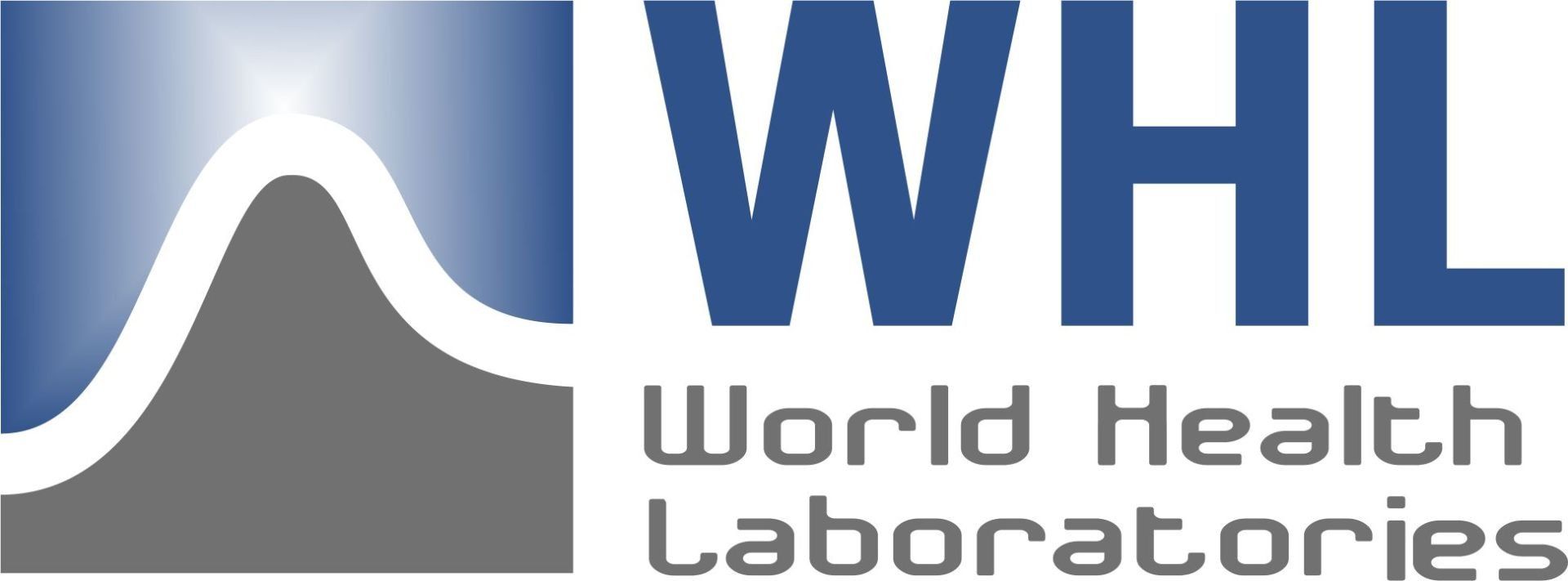THYROID IN URINE
Thyroid hormones
Testing for T3, T4 and RT3 in 24hrs urine
Until recently, occurring hormonal changes that perceptibly inhibit physical, sexual, cognitive functions etc. were attributed to growing old, and victims of these changes were expected to accept the fact that their bodies were entering into a long degenerative process that would someday result in death.
A remarkable amount of data has been compiled that indicates many of the diseases that this middle-aged population begins experiencing, (including depression, chronic fatigue syndrome, and heart disease) are directly related to hormone imbalances that are correctable with currently available drug and nutrient therapies. To the patients’ detriment, conventional doctors are increasingly prescribing drugs to treat depression, elevated cholesterol, angina and a host of diseases that may be caused by an underlying hormone imbalance.
In particular, insufficiency of the Thyroid hormone causes bodily functions to slow down and is often mistaken for depression. Other effects of low thyroid status include panic attacks, constipation, impotence, unexplained weight change, paranoid psychosis and dementia. Also, hair becomes coarse and dry and skin becomes dry, scaly and thick, the eyelids droop and the outside ends of the eyebrows slowly fall out. Many people develop carpal tunnel syndrome and their facial expression become dull.
Many structural or functional abnormalities of the Thyroid gland can lead to deficient production of thyroid hormones. The clinical state resulting therefrom is termed hypothyroidism. Hypothyroidism is one of the most under-diagnosed and important conditions in the world. It has been called the “unsuspected illness” and accounts for a great number of complaints in children, adolescents and adults.
Hypothyroidism has been known to cause serious adverse effects on the cardiovascular system (decreased heart rate and pulse pressure; low-output congestive heart failure), gastrointestinal system (decreased appetite), musculo-skeletal system (stiffness and muscle fatigue), renal system (impaired renal blood flow), and metabolic system (increased cholesterol, triglycerides and homocysteine; decreased hormone degradation).
THE DIAGNOSIS BY CONVENTIONAL DOCTORS
Now a day, the diagnosis of this illness by conventional doctors and endocrinologists is made almost exclusively from blood tests. Routinely, Thyroxin (T4) and Thyroid Stimulating Hormone (TSH) are measured in plasma or serum. In addition to that, a protein that binds (TBG) to T4 is also measured. From this protein and T4, a Free T4 is calculated. Another approach is the use of the “analogue” method, where a synthetic molecule similar to T4 (T4 analogue) is created that does not bind to TBG but competes with non-bound (Free) T4 for anti-T4 antibody. This analogue is labeled with an isotope or enzyme system, so that the amount of analogue bound to the antibody is proportional to the amount of Free T4 available. Apparently, these types of tests are assumed to differentiate euthyroid persons from hyperthyroid and hypothyroid patients.
With respect to plasma T3, it is somewhat paradoxical that although T3 is the major metabolically active thyroid hormone, its plasma concentration does not necessarily connote any clinical symptom. Concentration of T3 in plasma changes in fasting, in acute and chronic non-thyroidal diseases and with age. For all these reasons T3 value is too non-specific to serve as a useful routine diagnostic test. Approximately 6 ug of T3 are secreted by the thyroid gland each day, with 80% of the total daily production of T3 (24ug) arising from peripheral deiodination of T4; of this only 0.3% is in Free form. Plasma concentration of Free T3 in normal adults is 300 pg/dl and that of Total T3 is 120 ng/dl. The sensitivity of the presently available assay for Free T3 is 125 pg/dl and that of Total T3 is 30 ng/dl.
The Free thyroid hormones in plasma are in equilibrium with protein-bound thyroid hormones in the tissues. Free thyroid hormones are added to the circulating pool by the thyroid. It is the Free hormones in plasma that are physiologically active form to enter cells and to exert metabolic control.
T4 is considered to be the prohormone for the metabolically active thyroid hormone T3. The production of T3 by 5’monodeiodination of T4 by the peripheral tissue is known to be tightly autoregulated so as to maintain a normal circulating T3 level in the face of T4 fluctuation. These considerations suggest a circulating T3 level, and thereby a euthyroid state is maintained despite wide fluctuation of Total T4. In the case of the mild hypothyroid patient, T4 is generally decreased and T3 is normal. But, it is also known that certain physiological and pathological factors such as, old age, fasting, malnutrition, systemic illness, trauma etc. do impair conversion of T4 to T3. (1)
So far the most sensitive indicator of thyroid abnormalities, whatever the etiology is an elevation of the plasma TSH concentration, often occurring before a fall of the plasma T4 concentration into the hypothyroid range. As mentioned earlier, in some patients with a “failing thyroid”, the plasma T3 concentration is normal even though the plasma T4 concentration is low since the TSH stimulated thyroid preferentially secretes T3. Patients with central hypothyroidism, (secondary: primary or metastitic tumor of the pituitary; pituitary necrosis; and tertiary: skull fracture; tumor; infections; and degenerative disease) constitute only about 15% of the total population of hypothyroid patients, the remaining 85% having primary thyroid failure. The diagnosis and management of hypothyroidism in patients with pituitary or hypothalamic failure present a more complex problem, primarily because of the lack of utility of plasma TSH in these situations. The level of TSH in such patients may be reduced, normal or slightly elevated. The normal and raised values presumably representing hormone with reduced biologic potency due to defects in the glycosylation pattern. The precise level of TSH, which delineates hypothyroidism, has not been established. (2)
Judging from these arguments, one can safely conclude that none of the above diagnostic parameters T3, T4 and TSH in plasma can predict mild or moderate hypothyroidism.
The onset of hypothyroidism may be subtle and often may go undetected for many years while the patient’s health gradually deteriorates. If untreated, hypothyroidism can eventually cause anemia, low body temperature, heart failure and a decrease in blood flow to the brain.
If a patient has a normal TSH and a normal Free T4, the conventional physician will tell the patient that they do not have hypothyroidism, no matter how many symptoms or signs of hypothyroidism they have. This is a regrettable yet all too common error, because these tests only pick up most severe cases of hypothyroidism and miss virtually all of the milder cases that would respond favorably to
thyroid hormone treatment. Now the question is that if most hypothyroid cases cannot be diagnosed by the conventional blood test, how can they be diagnosed?
Now let us look at some of the pitfalls of this system. The value of total plasma T4, when measured either by RIA or by CPB procedure depends on the binding constant of T4 and the binding proteins (TBG). This value often changes as a result of patients’ various physiological statuses. Also, patients with a hereditary disease in TBG may produce a compromised value of total T4. In a normal adult the thyroid gland secretes approximately 80 ug of T4 per day; of this only 0.03% is in Free form. A plasma concentration of Free T4 is 1.5 ng/dl and that of Total T4 is 8.6 ug/dl. The sensitivity of the
best assay system is 0.25ng/dl for Free T4 and that of Total T4 is 1.5 ug/dl. In patients with mild hypothyroidism of thyroid origin, the Free T4 by any method is very insensitive.
RT3 reduces the activity of T3 by reducing the metabolism. Although T3 in the urine has the best correlation with the clinical picture. For more specific cases it may be valuable: Cortisol, DHEA, Aldosterone, Total 17-ketosteroids and 17-hydroxysteroids and the individual fractions of keto- and hydroxysteroids, pregnanediol and triol ect. to decide. (8)
To determine the clinical value of RT3 in the urine, as well as other factors such as selenium, copper and zinc in the urine are also important . (8) The precursors of thyroid hormones are the amino acids Phenylalanine and Tyrosine, which are located in the amino acid panel. The amino acid panel (40 amino acids) also provides other valuable information: status of other amino acids, function of certain vitamins / minerals etc. Which may also be of importance to reduce symptoms that are seen in hypothyroidism such as fatigue, low energy, depression, constipation etc .
DIAGNOSING MILD OR MODERATE HYPOTHYROIDISM?
One way of diagnosing mild hypothyroidism may be based on clinical symptomatology and the associated endocrine, radiologic and neurologic findings. Such symptoms are slow clearance of T3 and T4 from blood, poor lymphatic drainage, arterial vasoconstriction, reduced blood volume and fewer cell receptor for T3 and T4. The other way, which is more economical and less time consuming is to simply measure urinary Free T3 and T4.
Until 1960, the biological fluid used for the measurement of hormones was mainly urine. Traditionally, urinary hormone assays were the mainstay of investigation of thyroid hormone and steroid metabolism. This vogue was partially interrupted after the advent of the competitive protein-binding assay and was then completely ignored after the introduction of radioimmuno assay, which is extremely sensitive and highly specific. Routine blood sample analysis became possible with this technology, therefore, the ease of transmission of blood samples to the laboratory makes physicians prefer to ask for blood rather than urine measurement. However, in comparison to the plasma measurements, (which gives information about the hormonal status of the patient at a particular point in time, i.e. at the time of venipuncture) the evaluation of the same hormone from urine has the additional advantage of assessing thyroid status, which is an indicator of the tissue exposure to the hormone, over a 24-hour period. This ”area under the curve” measurement may avoid diagnostic errors due to incomplete control of the circumstances in which a blood sample was taken. With urine it is often possible to show sustained changes which may be diagnostically more important. Hormone measurement from urine in general has been proven to have several advantages. For expample, in suspected adrenal hyperfunction urinary measurement of steroids offer a complete picture of steroid homeostatis than plasma measurement and has been the mainstay of diagnosis. In Cushing’s Syndrome, plasma cortisol may be in the upper normal range for part of the day, but fails to fall normally at night and this will be reflected by “integrated” urinary measurements over 24 hours. Beside, one can speculate the kidney as an in vivo ultrafilter passing Free hormone from blood to urine. Therefore, urine measurements reflect tissue exposure to non-protein-bound hormone.
In urine, there are two forms of T3 and T4. First there are unconjugated T3 and T4, which have entered the urine by glomerulas ultrafiltration of serum non-protein-bound T3 and T4, some being then reabsorbed in the renal tubules. In normal adult and hyperthyroid patients approximately 50% is reabsorbed while in the hypothyroid situation only 20% is reabsorbed. Second, there are T3 and T4, which have been conjugated with glucuronide or sulphate, either in the kidney itself or in the liver. Only the unconjugated fractions are expected to reflect the serum-unbound level. The total excretion of T3 and T4 depend on liver conjugation, hormone kinetics and upon renal enzymes as well as on the serum unbound level.
Reports from several laboratories Chan et. al. (1972) (3); Burke & Eastman (1974) (4); Chan & London (1972) (5), have shown that there is a fairly good relationship between urinary T3 and T4 excretion and serum unbound concentration. Recently Dr. Braisier, presented at the annual meeting of the American Academy of Environmental Medicine, held in Coeur d’Alene, Idaho during October, 1999, an overwhelming conclusion of his study of over a decade involving 832 hypothyroid patients. (6) The study clearly documents the advantage of urinary T3 and T4 value for his critical diagnosis. He also confirms that when these patients were treated with natural desiccated thyroid (armour thyroid), the value of T3 in 24 hour urine correlates much better with the clinical thyroid status of patients. In other words, there was indeed a good correlation between clinical diagnosis and patient response to specific therapy. Approximately 70% of urinary T3 and T4 in normal adults are excreted as Free whereas, 30% is excreted conjugated with glucmonide as sulfate. Using highly specific
preabsorbed monoclonal IgG against T3 and T4 some laboratories can measure unconjugated urinary T3 and T4 exclusively.
The method is sensitive enough to measure 1.3 pg of T3 and 2.0 pg of T4. The technique is unaffected by changes in electrolyte composition, urea content and PH of the urine. The cross interference of T3 and T4 is negligible because of the specificity of the antibody.
TEST INDICATIONS!
• Fatigue (unusual, persistent, esp. on awakening)
• Depression (with tendency towards suicide)
• Coldness
• Headache (migraine, tension headache)
• Muscle cramps
• Constipation
• Arthritis (rheumatoid pain, joint, tendon and muscle swelling and stiffness)
• Prolonged Achilles’ tendon reflex
Thyroid analysis is also recommended for the following conditions:
• Amenorrhea
• Basal temperature (low , < 36.7 C)
• Burning or tingling pain in the extremities
• Carpal tunnel syndrome
• Cholesterol, triglycerides and homocysteine (increased)
• Delayed Fertility
• Dysmenorrhea
• Growth and intellectual retardation
• Hair (coarse and dry)
• Hair loss
• Heart rate and pulse pressure (decreased)
• Hoarseness
• Repeated Infections esp of sinus, respiratory and urinary tract
• Lack of appetite
• Memory (impaired)
• Mixoedema
• Premenstrual tension
• Skin (dry, scaly and thick)
• Weight change (unexplained)
LITERATURE:
1. Orden I., Pit. J., Juste, M.G., Giner A., Gomez M.E., and Escanero J.F. (1988) Rev. ESP. FIS. 44: 179-184.
2. Franklyn J.A., Black E.G., Bitteridge J. and Sheppard M.C. (1994), J. Clin. Endocrinol. Metab. 78: 1368 – 1371.
3. Chan V., and Landon J. (1972), Lancet, 4 – 6.
4. Burke C.W. and Eastman C.J. (1974) Br. Med. Bull. 30: 93 – 99.
5. Chan V., Landon J., Besser G.M., and Ekins R.P. (1972), Lancet 253 – 256.
6. Baisier W.V., Hertoghe J., and Eeckhaut W. (1999).
7. Baisier, Hertoghe et al: “Thyroid Insuffiency. Is TSH measurement the only diagnostic tool?” J. Nutr. & Env. Med. 2000, 10, 105- 113.)
8. Dr. Durrant Peatfield . The great thyroid scandal
ADDRESS Europe
WHL | World Health LaboratoryRegulierenring 93981 LA BunnikThe NetherlandsPhone: +31 30 2871492Fax: +31 30 2802688CC: 58481087
ADDRESS North America
HDRI| Health Diagnostics and Research Institute 540 Bordentown Avenue, Suite 2300 South Amboy, NJ 08879Phone: +1 732-721-1234Fax: +1 732-525-3288
OPENING HOURSAPPOINTMENT ONLY:
- Mon - Fri
- Appointment Only
- Sat - Sun
- Closed
Yes, download Request Form







